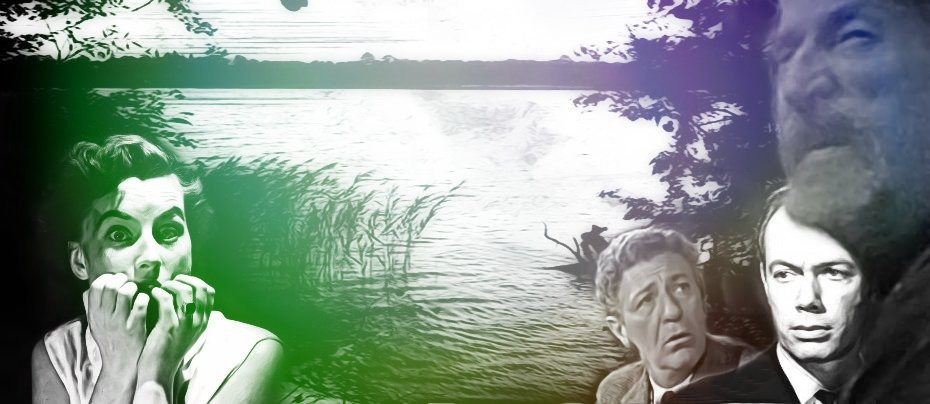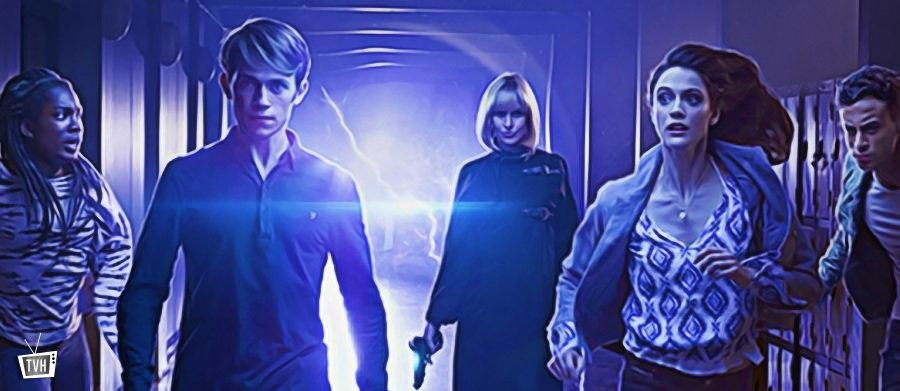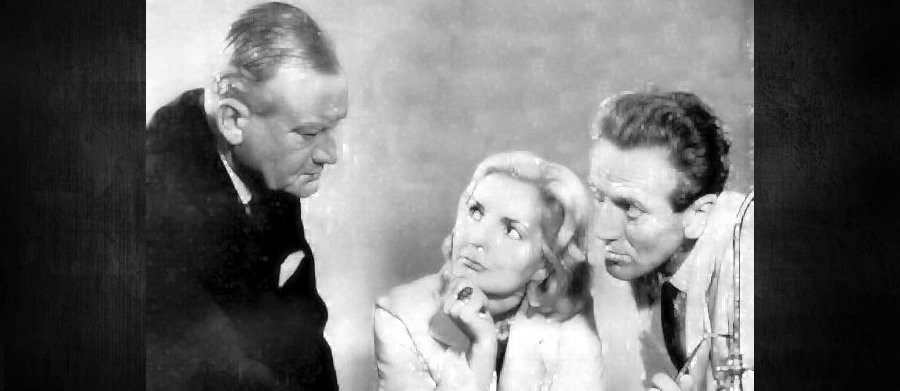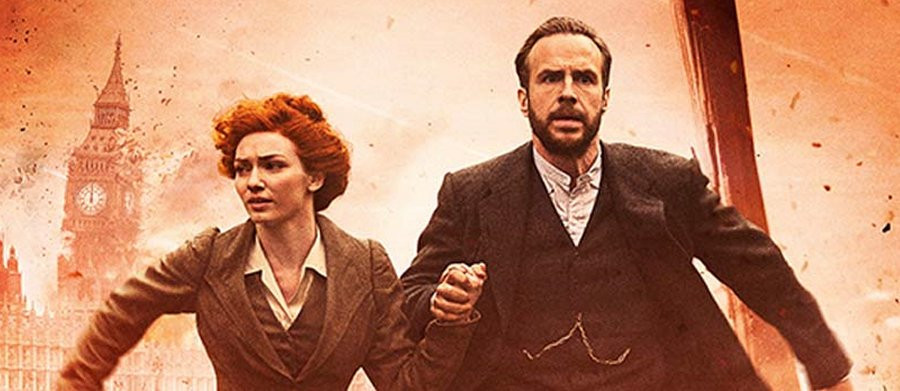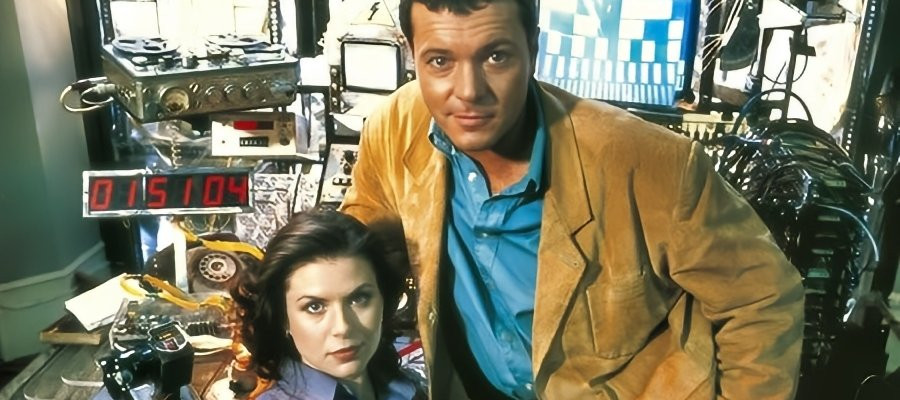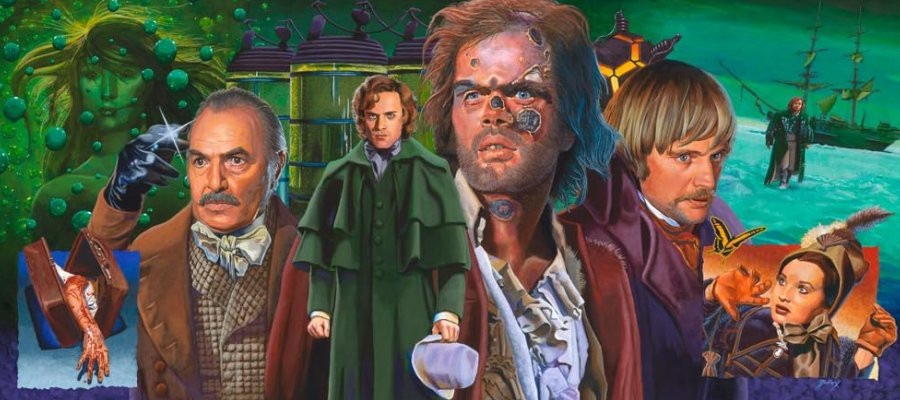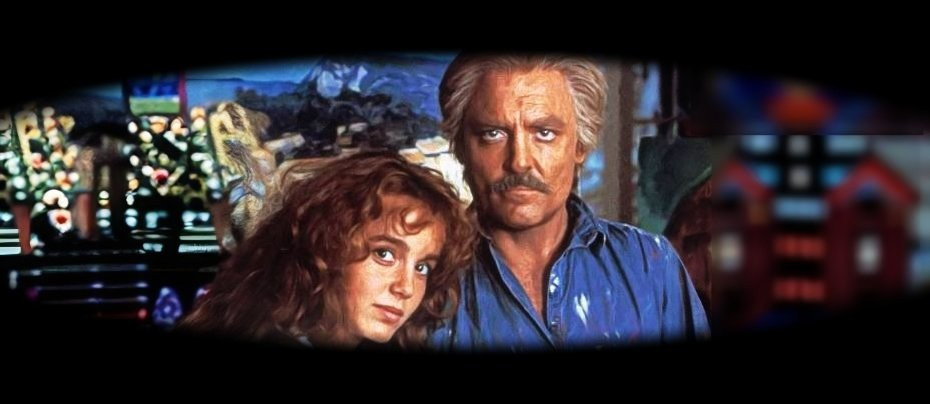
Sapphire & Steel - Assignment Four
"Last night, as I was walking up the stair
I met a man who wasn't there
He wasn't there again today
I wish, I wish he'd go away."
The second serial of 1981 vies with Assignment Two for the title of Sapphire & Steel's very best. Sometimes referred to as "The Shape" or "The Man Without a Face," the story has been cited by writer P. J. Hammond as his personal favourite of the programme, and it's easy to see why. An absolute masterclass in tense, haunting atmosphere, Assignment Four is based on a simple, chilling concept that's brilliantly realised on screen. At only four episodes long, shorter than any of the previous serials, it never threatens to outstay its welcome, with each episode being twenty-five minutes of subdued horror.

This serial has a lot in common with Assignment One. It's contained within a single building; in this case, a flat, the junk shop beneath it, and the staircase that joins them. It makes heavy use of the classic chiller trope of spooky kids and nursery rhymes. However, by now the programme has moved far beyond its origins as an ostensible children's show. The horror is dialled up, the subject matter more mature. The main guest character, Liz, who lives in the flat, is heavily hinted to be a sex worker. It's subtle enough to pass for a family audience, but absolutely clear to any adult watching.

Liz is played by Alyson Spiro, mostly known at the time for youth roles in series such as Barriers and The Enigma Files, but since seen heavily in soaps including Brookside and Emmerdale. She gives one of the most memorable guest performances in the series as the hardened but likeable Liz, although it's by no means a subtle one. At times she seems to be in a completely different programme as the two leads, her more over-the-top, almost theatrical performance at odds with their subdued style, but this works. Liz is someone with a real life in the real world, while Sapphire and Steel, like the beings they fight against, often come across as ghosts. Liz initially reacts to their unannounced presence with hostility and sarcasm (actually, the sarcasm carries on for most of the story), but she comes to trust them rather quickly. If this was down to Sapphire's interpersonal skills you could understand it, but Liz spends most of her time in the early part of the story with Steel, who's as bluntly cold as ever.
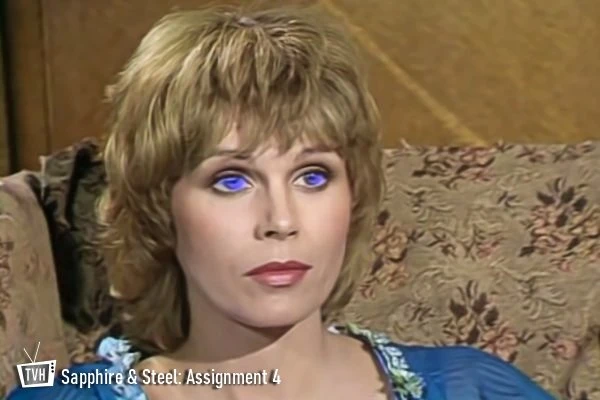
It's Sapphire who displays the most power in this episode – psychokinesis, telepathy and clairvoyance – while Steel is largely relegated to investigative work. By now Lumley and McCallum completely embody their characters. Interestingly, Liz refers to them repeatedly as boyfriend and girlfriend , and they never bother to correct her. There's a subtle flirtatiousness between them throughout the serial, although Steel's also pretty harsh against his partner when she is unable to use her abilities to roll back time against the villain of the story.
Assignment Four tweaks the format of the programme slightly by including a distinct individual villain rather than a faceless threat as in the previous serials. Nonetheless, there's still a strong paranormal concept behind the enemy, perhaps the most unsettling of all the serials. Playing on archaic superstitions surrounding photographs, the story posits that some entity found its way into the first photograph ever taken (by Niepce in the 1820s, as retrieved from Sapphire's own internal Wikipedia) and has existed ever since in some kind of parallel realm accessible through photographs. Every photographic image in existence is a potential way in to our world for this being.

Beneath the flat is a sort of lost-and-found, "a cross between a second-hand bargain shop and a pawnbrokers," where the former landlord of the building made a modest living and engaged in his hobby of photographic trickery. In his den, the old landlord stashed hundreds of antique photographs (necessitating an amusingly long list of credits to various sources of ephemera) and equipment, where he entertained Liz's flatmate Ruth. "A few cheap tricks to impress the ladies," Steel puts it. ("At least he tried to impress them," notes Sapphire.) Manipulating the photos has given the entity a way in to our reality – and both the landlord and Ruth have vanished.
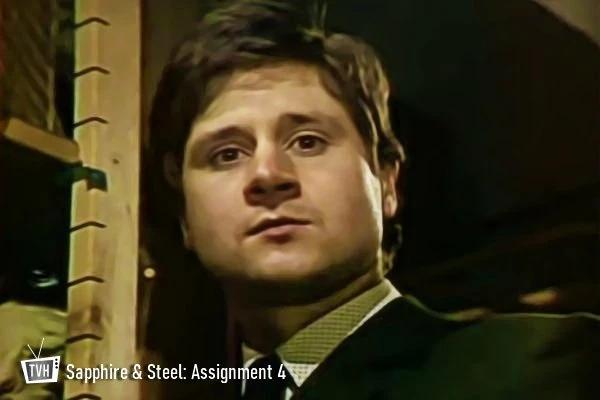
The new landlord, though, seems friendly enough, even though Liz can't quite remember what he looks like. Credited only as The Shape, this being is perceived differently by everyone who sees him. His younger form is played by Philip Bird and the older by Australian actor Bob Hornery, both quietly sinister, but in his – its – true form, the Shape is completely faceless. Still played by Bird, the true, faceless image of the Shape is one of the most memorable and unsettling sights in the whole programme. Kudos to Bird for wearing the facial shell required to create the Shape, which was reportedly extremely uncomfortable.
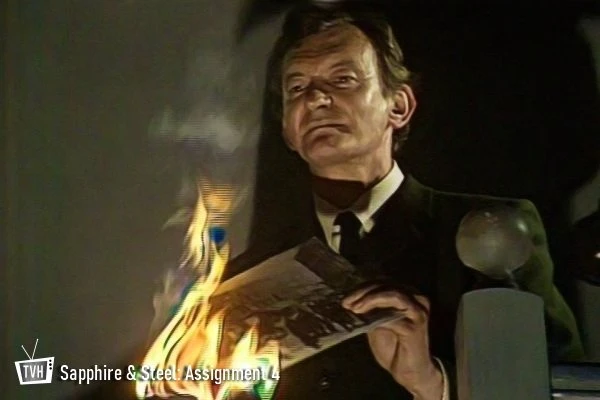
The entity is supported by a gaggle of Victorian children, plucked from the photographs in the shop, narrating the events in sing-song rhymes and generally being creepy as all hell. Hammond has an anecdote of the troop of silent, sepia-toned children scaring the wits out of people in the ATV cafeteria. The children are doubtless victims of the Shape but are also sinister and vindictive in themselves, threatening the agents and calmly asking if they're allowed to hurt them. The photography theme carries on throughout, with both children turning into two-dimensional cut-outs when confronted, and Sapphire being reduced to a photograph temporarily when she confronts the Shape. (This sort of imagery was reused by Hammond over two decades later for his Torchwood episode "From Out of the Rain," which featured beings trapped on celluloid.)

Steel discovers that Ruth and the landlord have been captured inside a photograph, and Sapphire is able to open communication with Ruth (voiced by Shelagh Stephenson, Coronation Street) who is dimly aware that she's been trapped. When confronted, the Shape, who seemingly has no motivation beyond pure malice, burns the photograph. We sees nothing, but Ruth's screams are truly chilling. It's one of the most upsetting and terrifying moments in television, let alone Sapphire & Steel. The Shape goes on to trap the agents in a photo themselves (thanks to some nicely processed Quantel visual effects), and for a time it really looks like the entity has beaten them. In the end it's Liz who is able to free them, thanks to some telepathic instructions by the agents, and Steel is finally able to use his own trickery to capture the being between a set of mirrors, before imprisoning him in the endlessly reflective insides of a kaleidoscope. It's an ingenious ending, and the inhuman wailing of the Shape is as unnerving as its faceless appearance, hinting that beneath that is something even more inhuman.
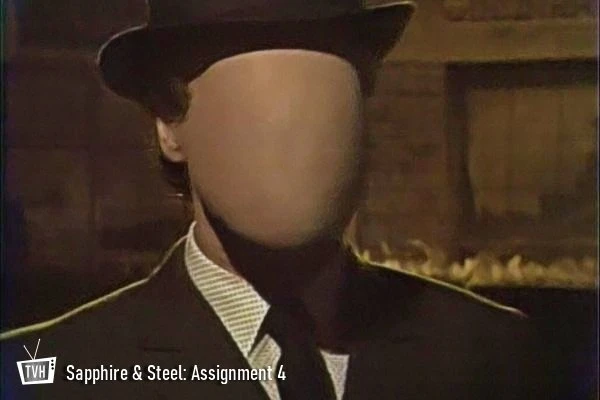
The serial ends with Steel warning Liz that the Shape won't be contained forever and will be out for revenge, and while they'll be waiting for it, she should take the precaution of destroying every photo of herself and never allowing herself to be captured on film again. It's a truly nightmarish concept and one that is even more unsettling now, in an age when we take endless photographs of ourselves that are replicated limitlessly online.
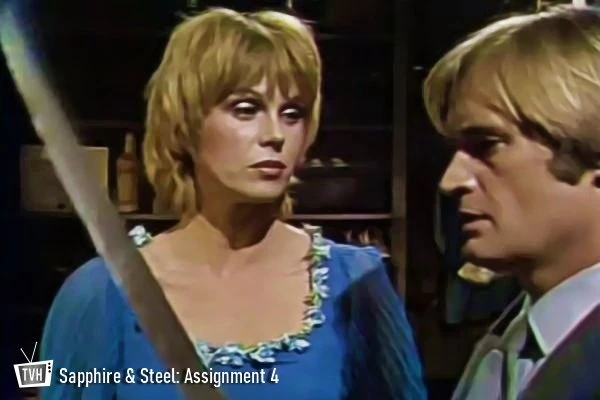
Assignment Four boasts what is inarguably one of Hammond's strongest scripts, with remarkably restrained yet effective direction by David Foster, previously the director of the equally compelling Assignment Two. It's a serial that has stuck in the minds of viewers who saw it on initial broadcast, thanks to some arresting images and an all-pervading sense of dread. Unfortunately, for all its critical praise, the programme did not achieve the hoped for viewing figures, and plans for a fifth serial were postponed. It would be another six months before a truncated third run of episodes was broadcast.
Review: Daniel Tessier
Dan describes himself as a geek. Skinny white guy. Older than he looks. Younger than he feels. Reads, watches, plays and writes. Has been compared to the third, fourth, fifth, sixth, seventh, eighth, tenth, eleventh and twelfth Doctors, and the Dream Lord. Plus Dr. Smith from 'Lost in Space.' He has also had a short story published in Master Pieces: Misadventures in Space and Time a charity anthology about the renegade Time Lord.
Dan's web page can be here: Immaterial
Published on January 18th, 2021. Written by Daniel Tessier for Television Heaven.



